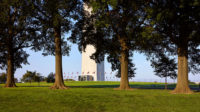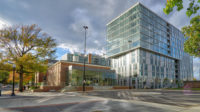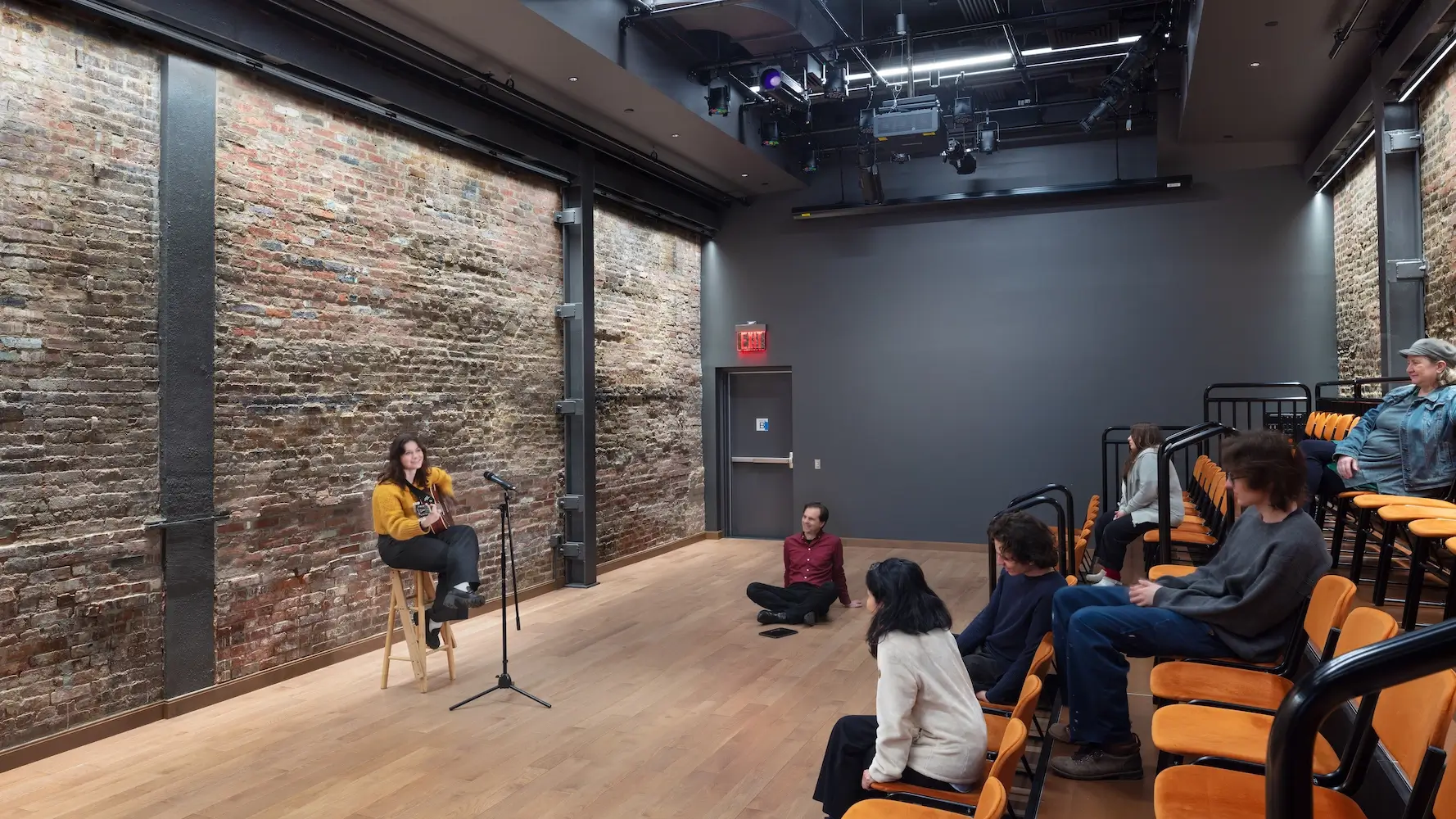Beyer Blinder Belle Gives New Life to a Downtown Theater Space in New York

Storefront view of La MaMa's freshly renovated The Club and Community Art Space building at 74 East 4th Street in Manhattan. The 1873 building is one of two East Village spaces populated by the venerable downtown cultural institution. Photo by John Bartelstone Photography

The building's lobby space was enlarged with a focus on improved accessibility. Photo by John Bartlestone Photography

The second-floor performance Space, The Club, at La MaMa. A larger theater venue is located just down the street. Photo by John Bartlestone Photography



Architects & Firms
Like a good play, the renovation of a building in Manhattan’s East Village for La MaMa Experimental Theatre Club grabs our attention by both revealing layers of meaning and adding new ones.
Erected in 1873 for the German-American orchestral society Aschenbroedel Verein and dolled up about 20 years later by the Gesangverein Schillerbund singing guild, the four-story building at 74 East 4th Street became La MaMa’s home when the group’s late founder, Ellen Stewart, bought it in 1967 after presenting avant-garde performances for six years in the basement of a nearby tenement on East 9th Street. Over the years, Stewart, an African-American pioneer of off-off-Broadway theater, turned the first and second floors of 74 East 4th Street into a pair of 99-seat performance spaces and lived upstairs while converting a nearby building into a 295-seat theater. Stewart eventually created a collection of buildings in the neighborhood housing an art gallery, an archive, and studio and rehearsal spaces.

La MaMa's longtime East Village Home at 74 East 4th Street. The recent redesign effort marks the 1873 building's first major renovation. Photo by John Bartelstone Photography
The recent $24 million renovation of 74 East 4th Street, designed by Beyer Blinder Belle (BBB) with theater and acoustic consultants Charcoalblue, peels away alterations such as brick infill on the first-floor facade done in the 20th century for security purposes. With this, the architects created a new glass-and-aluminum storefront with restored cast-iron pilasters, revealing the lobby interior to passersby on the street for the first time in decades. Working with Nicholson & Galloway, a Brooklyn company established in 1849, they repaired cast-iron window surrounds and painted them a cream color that matches the original hue. The result is an elevation with animated detailing that’s a dramatic shift from the somber red-on-red facade of La MaMa’s first 60 years.
Inside, BBB made major changes, many of which are meant to be invisible. The firm removed a single step at the front of the building and lowered part of the first floor one foot, so that the lobby is ADA-compliant. The team rebuilt vaults under the sidewalk, added an elevator and all-gender restrooms, and installed an easy-to-open rotating front door. With a building that’s just 25 feet wide, making use of every square inch was important, says Christopher Cowan, a principal at BBB. The new lobby now has a small pantry and is spacious enough to serve as a pre-function or informal performance space.

Third floor studio space. Photo by John Bartelstone Photography

The enlarged lobby space can be used for pre-show gatherings and small events. Photo by John Bartelstone Photography
Upstairs, the architects lowered the floor to add about 2½ feet to the ceiling height, incorporated new steel beams and columns to the perimeter to enhance the building’s structure, and integrated new mechanical systems with larger ducts that make less noise. With Charcoalblue, they decoupled floors to reduce sounds from above intruding on the main performance space—called The Club—on the second floor. “A lot of what you don’t see is where we spent the most money,” says Cowan. Demountable platforms offer a variety of seating and stage arrangements, allowing as many as 118 people to enjoy a show.


Third-floor studio space (1); Staircase in the renovated La MaMa building at 74 East 4th Street (2). Photos by John Bartelstone Photography
Through a process of strategic subtraction and addition, the renovated building reinforces La MaMa’s role as a cultural anchor in the East Village—a place where cutting-edge theater and historic preservation fit hand-in-glove.







